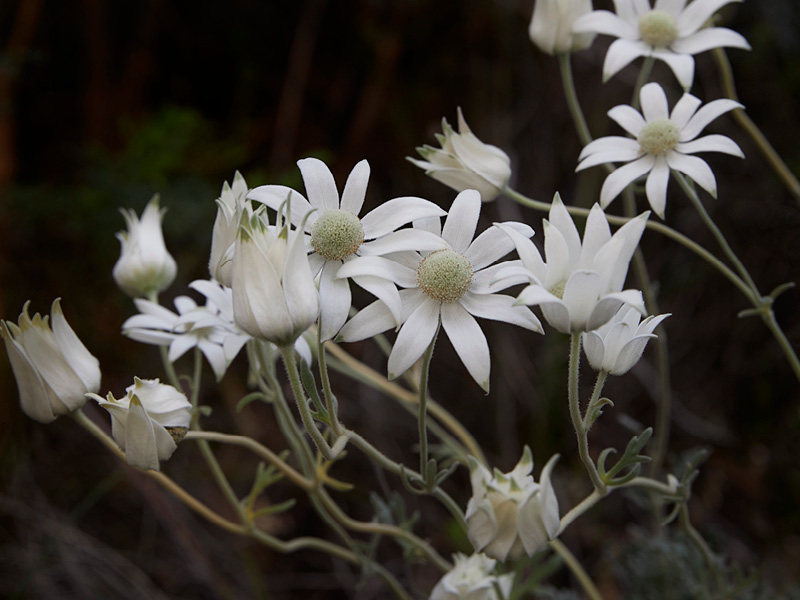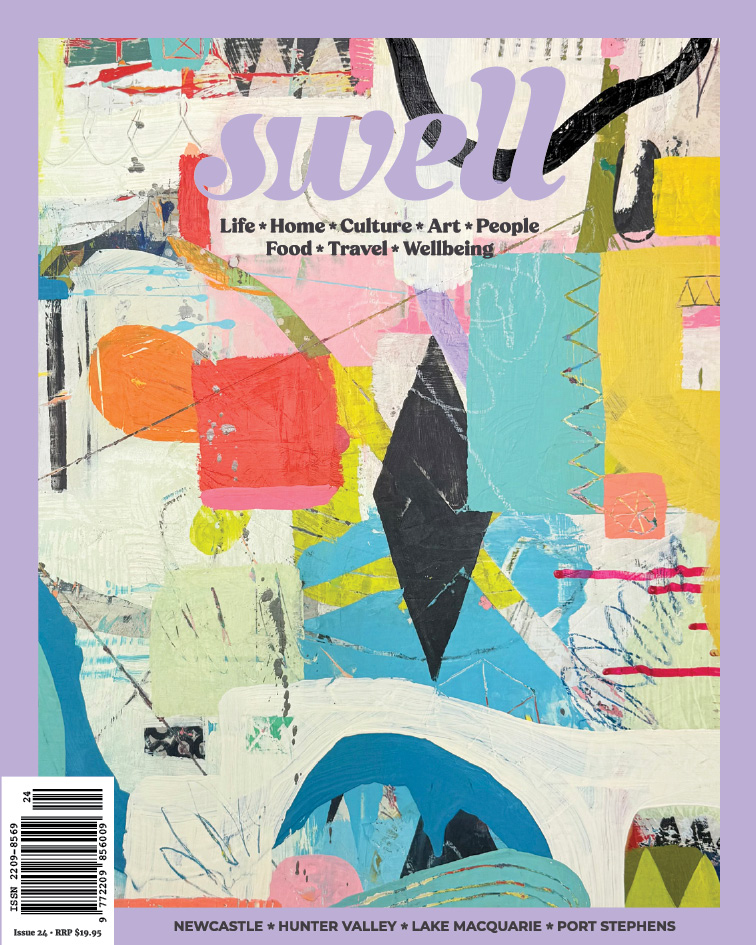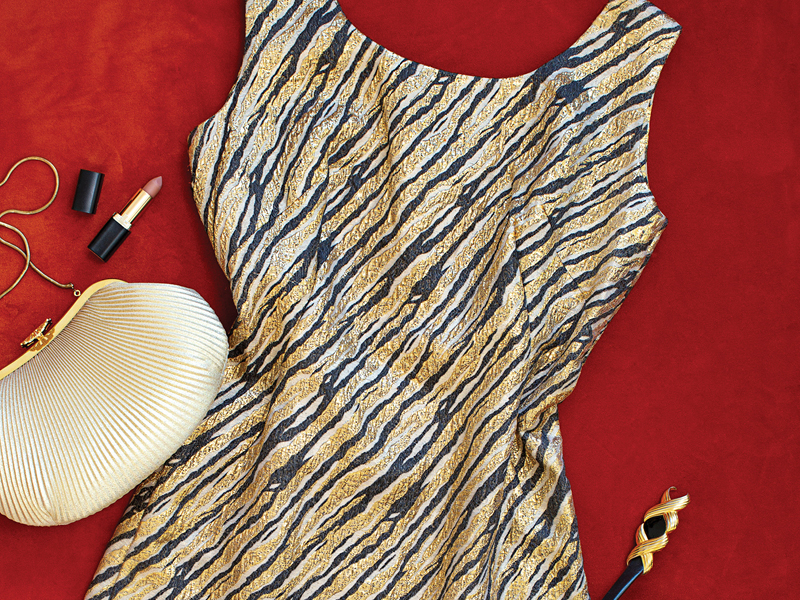Spring wildflowers and butterflies are all around us, but it’s a tiny bug that has excited our guide Maree McCarthy – and her enthusiasm is contagious. “There are carnivorous plants called sundew plants that have little glistening drops like dew on them that catch insects,” she explains. “Each one has a bug that lives in it without getting caught, so it is like the clownfish with the sea anemone.”
To a trained eye like Maree’s, the coastal heathland in the Awabakal Nature Reserve is alive with activity like this. The idyllic area hugging the coastline south of Dudley Beach is one of Newcastle’s best-kept secrets, and Maree is on a mission to share it with as many people as she can.
“I often heard people celebrating the Western Australian wildflowers and organising their flights to go over there to see them,” she recalls of her decision to start the Awabakal Wildflower Walk. “I was just talking to my ecology friends about it and saying, ‘We should be showing people what we’ve got here – it’s amazing.’ We were all very inspired and keen to share our love and knowledge of the wildflowers, and the idea really took off.”
So, for the last nineteen years she has run the Awabakal Wildflower Walk every spring, together with her network of ecologists and conservationists. While the reserve is open to the public year-round, she chose spring because that’s when the wildflowers are most abundant, turning parts of the reserve into a wildflower garden woven with a tapestry of pink, yellow, purple and blue flora.
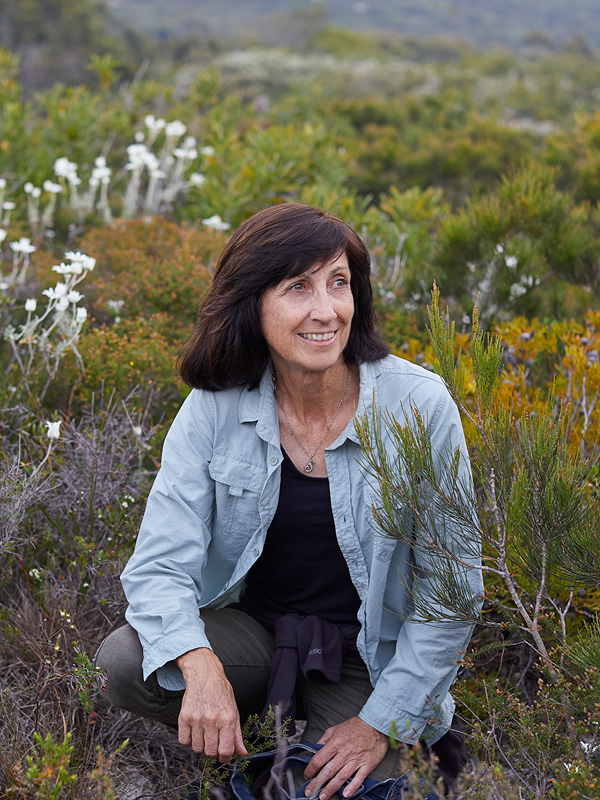

Being immersed in the Awabakal coastal heathland is a delight, and Maree expertly draws deep into the setting with her keen understanding of the landscape and its environmental significance.
She is a qualified horticulturalist with a background in environmental science, and she also runs a sustainable landscaping business, Nature’s Magic Garden Design. So, to her, the tours are an important way of educating people about the abundance of Newcastle’s natural landscape and what they can grow in their own gardens.
Being immersed in the Awabakal coastal heathland is a delight, and Maree expertly draws deep into the setting with her keen understanding of the landscape and its environmental significance.
“I often find people trying to grow West Australian wildflowers here because they’re so revered,” she says. “But in actual fact we’ve got fantastic wildflowers right here, which is really good because it brings in the local butterflies, birds and native bees. It makes a lot more sense to have local native plants rather than something from thousands of kilometres away, even if it is from the same continent.”
As well as learning about tiny insects and plants you’d otherwise miss, the annual walk is an opportunity to pick the brains of local ecologists and horticulturalists – meaning you leave with an elevated consciousness of the local environment.
“People’s eyes are opened and they develop more of an appreciation for what’s out there,” Maree says. “They get a better connection and sense of place. It’s just so fantastic out there – you can see right up to Nelson Bay from the headland.”
Maree and her fellow guides run a number of different walks throughout the day, and participants can pick and choose which ones interest them most. There are up to twenty different guides who have knowledge of everything from wetlands to bush medicine.

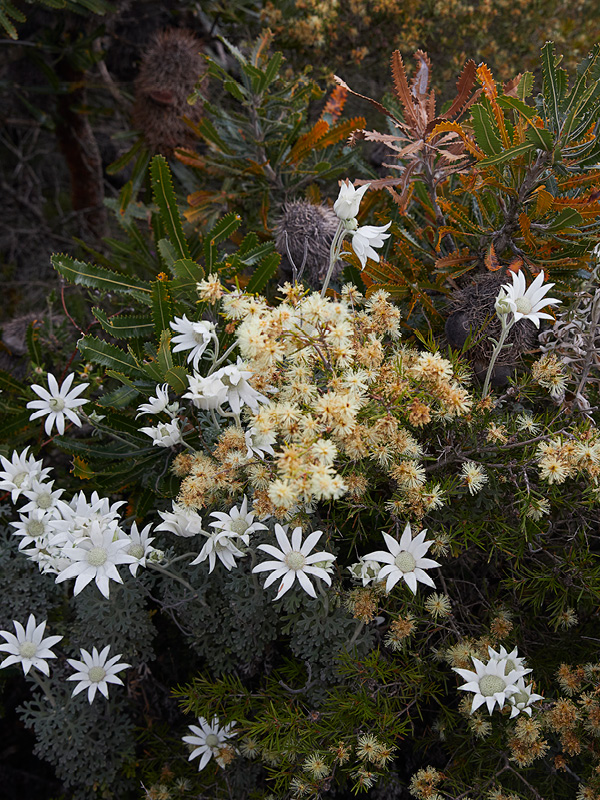
As well as learning about tiny insects and plants you’d otherwise miss, the annual walk is an opportunity to pick the brains of local ecologists and horticulturalists – meaning you leave with an elevated consciousness of the local environment.
“The Indigenous people would have used just about every single thing here and we are just learning as much as we can,” Maree says. She points to the history of maiden hair ferns as a treatment for coughs, the ‘apple dumpling’ plant with sweet edible fruit, and grass trees with sticky nectar and resin that can be used for glue.
The walks only run once a year because of the co-ordination required to get so many guides together at once. But Maree says the effort is worth it because it is the only free guided walk of its kind in the area.
The Indigenous people would have used just about every single thing here. Maree points to the history of maiden hair ferns as a treatment for coughs, the ‘apple dumpling’ plant with sweet edible fruit, and grass trees with sticky nectar and resin that can be used for glue.
Even though the event only happens in spring, she encourages participants to return to the Awabakal Nature Reserve throughout the year to watch the landscape change.
Since taking last year’s walk, I have found bushwalks more enriching. I have a better understanding of which natives to plant and why. I picked up ideas for supporting the local ecosystem in my garden. Now I don’t look at a maiden hair fern as just an on-trend indoor plant.

